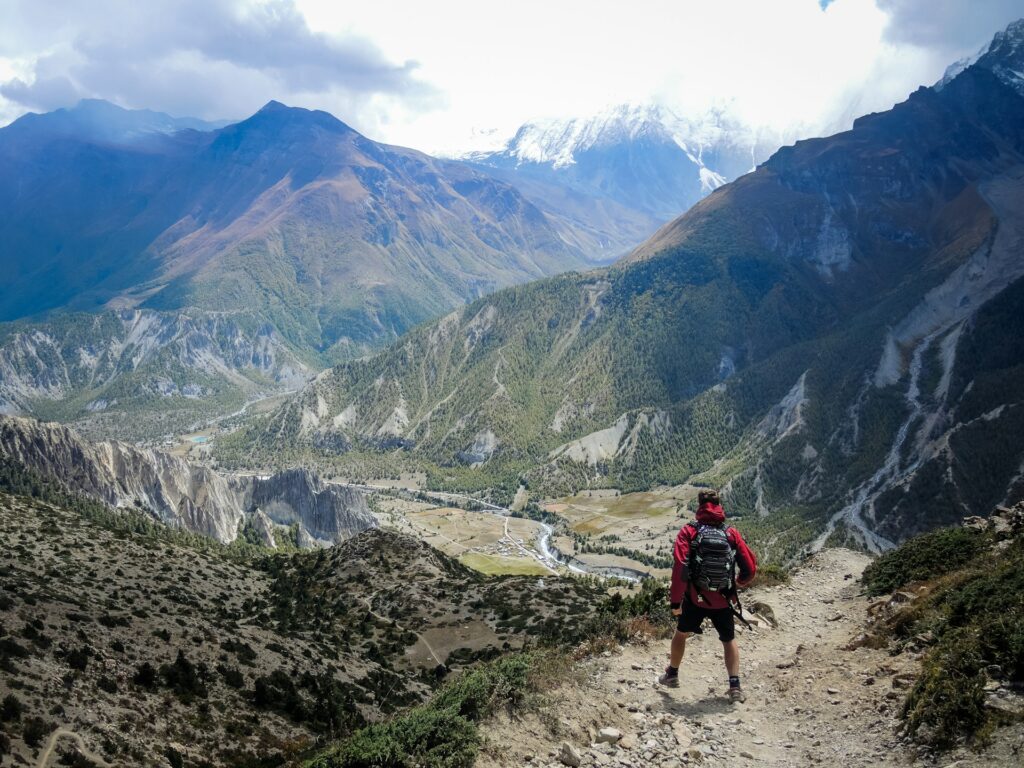Are you excited about your next adventure in the wild, but you’re not sure what to wear or what essentials to take with you? Don’t worry, I’ll share with you all that you need to learn how to pack for a day hike!
We will talk about the 10 essentials that should be in every hiker’s backpack. We will take this further and discuss some nice to have items you might consider to elevate your hiking experience. And don’t feel overwhelmed about fitting too many items in your bag. We’ll choose the best daypack for your needs, and discuss how you can optimize packing for comfort and convenience.
What qualifies as a day hike?
So what is considered a “day hike” anyway? Well, that is basically any hike you can complete within a single day. The timeframe of the hike ranges anywhere between a couple of hours and 6 or 8 hours if you’re an advanced hiker. A day hike is an excellent way to explore new places and enjoy the outdoors without the commitment of staying out overnight.
Choosing a trail that is appropriate to your and your companions’ fitness level is key. And bringing the right gear and supplies to the trail is just as important. This is critical to ensure you are equipped with what you need to enjoy your day out, or in case of an emergency.
What to pack for a day hike?
Figuring out how to pack for a day hike can be challenging for inexperienced hikers. You need to pack everything you would need on the trail but at the same time do not stuff your backpack with items you likely have no use for. Let’s start with the essentials you must have in your backpack on every hike.
The 10 Hiking Essentials
1. Hydration
Nothing is more important than having enough water in the wild. You’ll need at least 0.5 liter of water for each hour of hiking in moderate temperatures. If you expect higher temperatures and more intensity, then pack even more water.
Consider using a hydration bladder if your pack is designed with an interior sleeve. Water bladders are convenient, efficient and allow you to drink on the move without taking up much space in your backpack.
2. Food
Nothing is worse than a growling stomach with nothing to eat when you’re in the middle of nowhere! Pack more food than you think you’ll need for the day. You never know what could go wrong and you end up being lost and stranded overnight. You’ll want to pack items that do not require cooking and won’t go bad without a fridge for a couple of days. I usually pack a simple meal and a lot of snacks. Some of my favourites are energy and protein bars, nuts and (dried) fruits.
3. First Aid
Injuries happen. When they do, you better be prepared for it. This is why a first aid kit is an essential item in every outdoor backpack. There are plenty of pre-made kits (this is what I use), but you can also choose to build your own. Make sure your first aid kit includes bandages, basic pain killers and antibiotic ointments, basic tools (tweezers, scissors…etc), tape and gloves. Also include a whistle for signalling.
4. Navigation
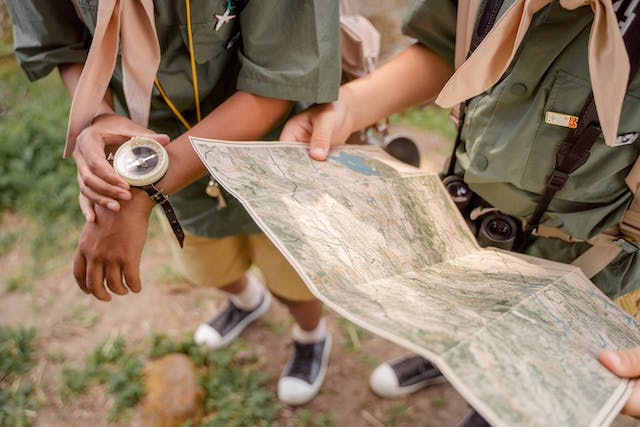
You shall never venture into wilderness without a compass and a map in your backpack, period! Yes, I know you have a smartphone with a bunch of navigation apps installed. But you can lose or break your phone, or its battery might die. Invest some time in learning how to use a map and compass to avoid getting lost while hiking.
Using your phone for navigation is an excellent idea. I do that all the time. Some of the apps I recommend are Gaia GPS and AllTrails. You should also consider investing in the pro/premium versions of the apps. They allow you to download the maps for offline-use. This is critical in the backcountry where there’s likely no cellular connectivity.
You can also consider buying a GPS device. They are usually a lot more rugged and weatherproof than your phone. Choose between a handheld device or a GPS watch. Both options will set you back a few hundred bucks and get more expensive with more features. Despite the hefty price tag, a GPS device could be worth the investment, especially those equipped with sending an SOS signal in case of emergency.
5. Illumination
I know we are discussing how to pack for a day hike that would ideally end before dark. But, weather conditions could get ugly, or you might get injured or lost and end up being stranded overnight. It’s an unfortunate event, but it’s crucial that you prepare for it.
But why do you need a separate flashlight when you already have one with your phone? Trust me, it’s not good enough when it’s too dark in the woods. The battery on your phone is too precious, especially in an emergency situation. Your phone’s torchlight is too dim. It won’t help you much if you need to light up a larger area to figure out how to get back on the trail or navigate rough terrain.
Almost any flashlight or a headlamp you choose is going to be a major improvement over your phone’s torchlight. I prefer a headlamp because it keeps your hands free for other tasks. Black Diamond offers a wide array of headlamp options that range in features and price.
6. Emergency Shelter
In case of an emergency where you have to spend the night outdoors, it’s very critical that you have some type of shelter with you. The emergency shelter will protect you from wind and rain and help keep you warm at night.
A few options to consider:
- Bivvy sack: This is similar to a sleeping bag but is not gonna provide you with its warmth. Alternatively, stuff your bivvy with pine needles to help in keeping you warm.
- Space blanket: It packs smalls and weighs almost nothing. It is windproof and waterproof and pretty much nothing is going to protect you from the elements as much as a space blanket.
- Large Plastic Bag: You will find many creative ways to use it in an emergency. Trust me.
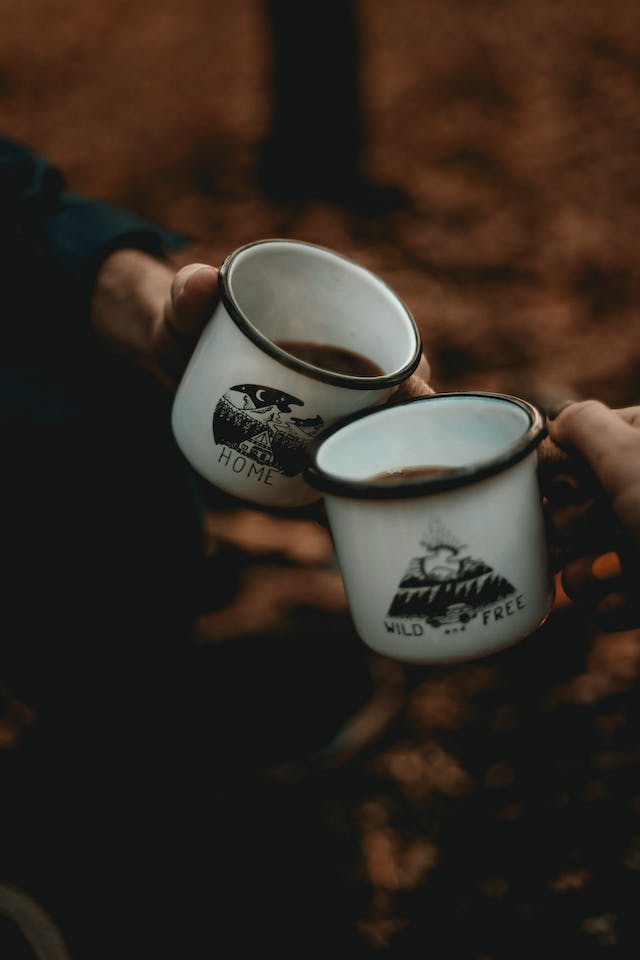
7. Knife / Multi-tools
You want to have this in your pack just in case something goes wrong with your gear. I would also recommend you keep duct tape with you. It will help you to temporarily patch any rips in your backpack.
8. Fire
If you find yourself stranded overnight, you will likely need to start and maintain a fire. Consider carrying a disposable butane lighter, or matches protected from being wet in a ziplock bag.
Also, some sort of a firestarter would come in handy. One option is dry tinder wrapped in a plastic bag. Another option is lint trappings from your dryer.
9. Extra Clothes
If you end up getting lost or with an injury, you are likely to spend the night in the wild. Or maybe the weather might change and gets windy and chilly. When that happens, you’ll thank me for recommending that you pack extra clothes. Ideally, you would want things that could provide you warmth without taking too much space in your daypack. Consider some or all the following if you have the space.
- Fleece pullover: provides good insulation for your upper body.
- Wool Gloves: Excellent to keep your hands warm.
- Beanie: Covers your head and ideally your ears.
- Socks: You can always fit an extra pair of merino wool socks in your backpack.
10. Sun Protection
Hiking in the scorching sun can be exhausting. But even when the sun isn’t too bad, you still want to protect your skin and eyes from ultraviolet light (UVA and UVB).
- Sunglasses: Make sure to protect your eyes with quality sunglasses that completely block any UV light. This becomes even more critical during long hikes in the snow where you would need extra dark glacier glasses.
- Sunscreen: There is nothing worse than a bad sunburn that could last for days. I’ve been there, done that, and it’s always ugly. As a result, I learned to listen to my wife and not to leave my sunscreen behind (the hard way, obviously). Choose a sunscreen that offers an SPF factor of at least 30. Make sure you re-apply every couple of hours. Also consider an SPF-rated lip balm to protect your lips from going dry.
- Clothing: If you do not want to rub sunscreen all over your body, consider lightweight synthetic clothing with an ultraviolet protection factor (UPF). Also, make sure you wear a hat that at least covers your head, and preferably your neck. Any exposed skin still needs to be covered with sunscreen, especially your face, neck and hands.
What to wear hiking?
Another piece of the puzzle when figuring out how to pack for a day hike is clothing. You want something that is comfortable, light and allows you to move freely. This will largely depend on the fabrics you choose.
Go for breathable and moisture wicking fabrics. You certainly should not be wearing any denim because they’re too heavy and “stiff”. You also need to avoid cotton because it absorbs water and sweat. As a result, you will get super cold if the wind starts blowing.
So what fabrics should you opt for?
- Merino wool: It is a natural fiber with excellent properties that make it the perfect choice for outdoor conditions. Merino wool is exceptionally moisture wicking, has excellent odor resistance, and is very light and breathable.
- Polyester: It is a synthetic fiber that is known to be highly durable and wrinkle resistant. It also has good sweat-wicking properties and dries quickly.
- Nylon: Also a synthetic fiber with excellent attributes for backcountry travel. It is lightweight, strong and water-resistant. It is quick drying and breathable, which makes it a good choice in different weather conditions.
- Synthetic blends: Manufacturers tend to blend different fabrics together to benefit from their individual properties for a (hopefully) superior end product. For example, blending polyester with merino wool can result in a piece that has the moisture-wicking attribute of merino wool, and the durability and quick drying properties of polyester.
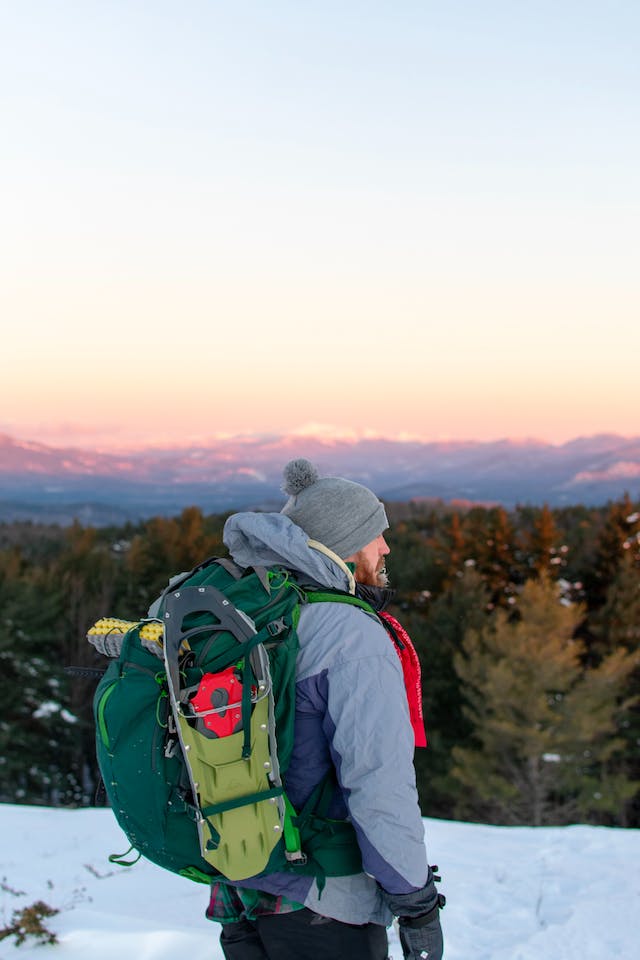
What to wear when deciding how to pack for a day hike?
You will want to think in terms of layers when deciding what to wear and pack for your hike. The weather forecast is going to play a key role in your decision. The colder the weather, the more (warm) layers you’ll need. On the other hand, when it’s hot outside, you’ll want a couple of light and breathable layers.
- Underwear
Stay away from cotton underwear and opt for either merino wool or synthetic fibers. Your underwear should be breathable and sweat-wicking. REI has a good collection to choose from, for men and women. - Base Layer
That’s the first layer of clothing. In the cold weather, opt for a lightweight and warm merino wool long-sleeve base layer. In warmer weather, a short-sleeve hiking t-shirt should be good enough. In all cases, choose a base layer with odor resistance and quick drying properties. - Mid Layer
This layer is highly dependent on the weather conditions of your hike. Those conditions may change during the day – which is one of the reasons I recommend extra clothes in the essentials list.- When it’s moderately cold: a long sleeve merino wool shirt or a zippered light jacket are great options.
- If the weather is cold: I recommend you opt for a fleece pullover or a jacket made of breathable synthetic material.
- When it’s really cold: there’s nothing better than a down jacket for those conditions. Choose a jacket that is rated at least 750 down fill and can pack small.
- Outer Shell
One thing I’ve learned living in the Netherlands is to never trust a weather forecast that says “zero chance of rain”. That’s a LIE! I’ve also had similar experiences hiking in tropical areas. So, I’ve learned to always keep a waterproof rain jacket in my backpack. My experience with Gore-Tex rain coats has been positive so far, so I suggest you go for one. - Hiking Pants
Some people like hiking with shorts when it’s not cold. But my personal recommendation is to get lightweight, breathable hiking pants for all weathers. That’s because pants are going to protect you from overgrowth and bugs while hiking. I always opt for rip and water resistant pants. Similarly, women can hike in either hiking pants or high quality leggings. - Hiking Footwear
In my opinion, footwear competes with the backpack for the number one spot on the “most important hiking gear” when planning for a day hike. First, you need to decide between hiking shoes or boots. Hiking shoes are lighter but boots provide better ankle support and ruggedness in challenging terrains. Regardless of which one you choose, look for the following attributes:- Fit: Your boots should have a good fit around your foot, but should not feel tight. It should also allow some room to wiggle your toes. Bonus tip is to consider brands that offer wide sizes if you have wide feet. I can’t recommend my Salomon X ULTRA 4 MID WIDE GTX boots enough. It’s been a game changer for my hiking experience!
- Waterproof: I always buy waterproof hiking boots because they allow me to get away with walking through shallow streams or muddy terrain without worrying about getting my socks wet.
- Lightweight: I recommend boots that do not weigh more than 1.5kg. You’ll certainly feel the weight on longer hikes.
- Traction: This one is really important. Your shoes should have a good grip on the terrain of the trail to avoid easily sliding on mud, pebbles or slippery rocks.
- Socks
This also follows the same recommendation in regards to fabric. However, I would encourage you to stick with merino wool or a blend that includes it.
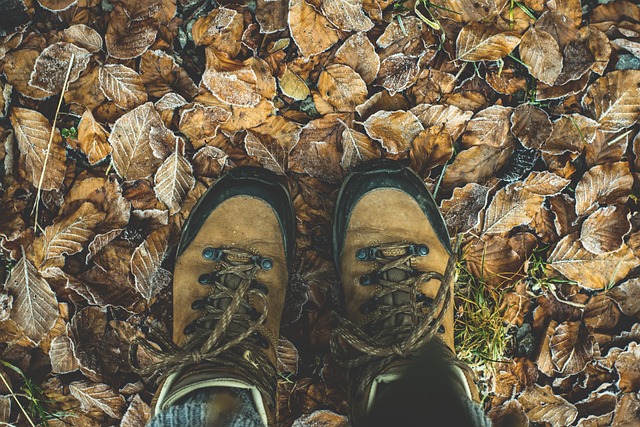
What other items could you bring on a day hike?
Once you’ve packed your essentials, you might consider a few more items that could help give you a more pleasant hiking experience.
Trekking Poles
Some people swear by trekking poles and would not go hiking without them. Others just don’t think they are that important. Like many other things in life, hiking with or without trekking poles is personal preference. However, from personal experience I can tell you that they can come in handy on more challenging terrains where you need the extra stability. Also, if you have knee pain, trekking poles are certainly worth giving a shot at least.
Power Bank
This is one of those items I would consider an essential for longer day hikes or multi-day treks. I use my phone as my primary navigation tool. If it runs out of a battery, it won’t be much help to me anymore. I still have my map and compass, but using my phone is certainly easier.
Insect Repellent
In addition to sucking the blood out of you, mosquitos and ticks suck the joy out of a day out in the outdoors! They will manage to bite into any exposed skin. If you are hiking in warm weather, especially in shaded woods, wetlands and near ponds, do yourself a favour and bring some effective insect repellent. You’ll protect yourself from diseases such as malaria and Lyme disease.
Bear Spray
This can be important when hiking in bear country, especially if you know there are grizzly bears around. If you do decide to carry bear spray, make sure it is easily within reach, not in your backpack. You should only use bear spray when the bear is charging at you. If this happens, spray a cloud between you and the bear.
Water Purification
A water filter is recommended for backpacking trips more than day hikes where it’s relatively easier to carry enough water. However, emergencies could happen and you might spend the night outdoors. Having a water filter or water purification tablets could come in handy in such a situation. Take a look at the straw filters by LifeStraw.
Photography
Today’s smartphones have excellent cameras. But, if you really want to take your pictures to the next level, a mirrorless camera and your choice of lens(es) become crucial. Camera equipment can be very heavy. I highly recommend the Peak Design Capture Clip and/or Peak Design Slide to help carry your gear.
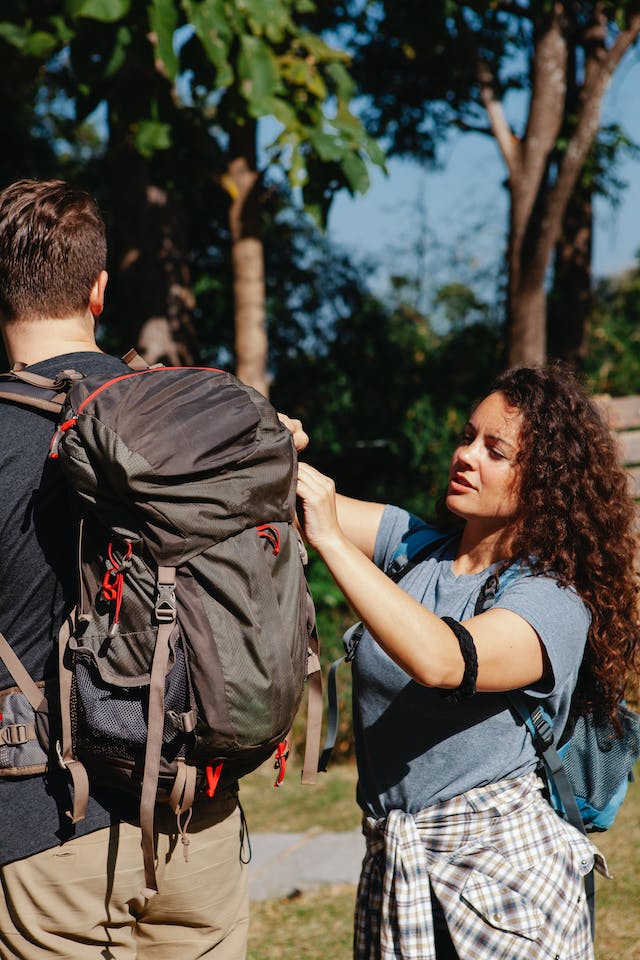
How to choose the right daypack?
Carrying the right daypack has a direct impact on the level of enjoyment of your hike. It has the ability to determine whether you’ll be strolling through the trail with a smile of serenity and peace. Or, you being miserable an hour into the hike and can’t wait until this nightmare is over. So let’s make sure we help you be a cheerful fellow hiker with the following tips:
- Fit: Regardless of how durable the pack is or what amazing bells and whistles it has, the key feature you should be looking for is comfort! A hiking pack should be a backpack that is the right size for your body. Choose a backpack with padded adjustable shoulder straps. Also consider one with sternum and hip belts.
- Capacity: As you learn how to pack for a day hike, you’ll notice that you won’t be carrying excessive amounts of gear on your trip. The capacity of a typical day hike backpack ranges between 20 and 35 liters.
- Price: You’ll find backpacks with sharp differences in prices. This is largely determined by brand, quality and the features it offers. I encourage you to avoid the tendency to go for the cheapest option because of a backpack’s impact on your whole hiking experience. Also, keep in mind that you’re investing in an essential piece of gear that should last you several years. So you have to strike a balance between price and quality as well as features that are right for you and your preferences.
- Features: Backpacks come with a variety of nice to have features. Define what’s important to you in selecting the right pack for you. A few options to consider:
- An interior sleeve for a hydration bladder.
- Water-resistant material and/or rain cover (usually inside an accessible compartment).
- Trekking pole attachments.
- Mesh back panels that promote airflow for good ventilation and reduced sweating.
It took me over two weeks of extensive research and returning 2 backpacks until I found the right one for me. The backpack and its features are going to play a major role in deciding how to pack for a day hike. Trust me, you should not settle for a backpack that isn’t the one for you.
How to pack your backpack?
You want to achieve two things when packing you backpack:
- Distribute weight evenly from side to side to balance your backpack. This will provide you with comfort and stability on the trail.
- Pack your stuff efficiently for improved accessibility to your items.
So how can you organize your daypack effectively?
- Gather your gear: Start by laying out all of the items you’re going to take with you on your hike. This gives you an overview of everything you’re going to pack and helps you plan the next steps.
- Heaviest items: Those should go close to your back and should be centered in the middle of the backpack. This will help distribute the weight evenly and maintain your center of gravity to improve balance.
- Quick access items: Make sure you place these items in easily accessible areas and pockets of your pack. These include snacks, first aid kit, a rain jack, navigation tools…etc.
- Fill the voids: Use lighter and/or malleable items such as clothes to fill the voids in your pack. This will help keep everything together providing more stability.
- Secure loose items: Some items that cannot go inside your backpack can be secured on the outside using compression straps or attachments (ex: trekking poles or a tripod).
- Protect your stuff:
- Protect items from moisture: Depending on the weather forecast, you might need to protect some of your items from getting wet. Use waterproof sacks, dry bags or ziplock bags.
- Protect fragile items: You sunglasses, electronics or anything fragile should go into protective cases to prevent damage.
- Try it: Once you’ve packed everything, give it a try on your back and see how it feels. If you’re not comfortable moving around, then make sure you keep adjusting until it feels right.
Final Thoughts: How to pack for a day hike?
Day hikes can be very rewarding when they’re well planned. A major part of that planning revolves around deciding what to wear and how to pack for your day hike. But don’t let that scare you off because it gets easier every time you go out in the wild.
Make sure you always have the ten essentials of hiking in your backpack. And speaking of your backpack, it’s crucial that you choose the right one for you and your outdoor needs. If you end up having more space in your backpack, consider some of the nice-to-have items that will help improve your hiking experience.
Always remember to check the weather conditions when planning your day in the backcountry and use a layering system to dress for the occasion. And most importantly, go out and have an amazing time in nature!
Did I miss any item or piece of gear you think is important? Share your thoughts in the comments down below!
